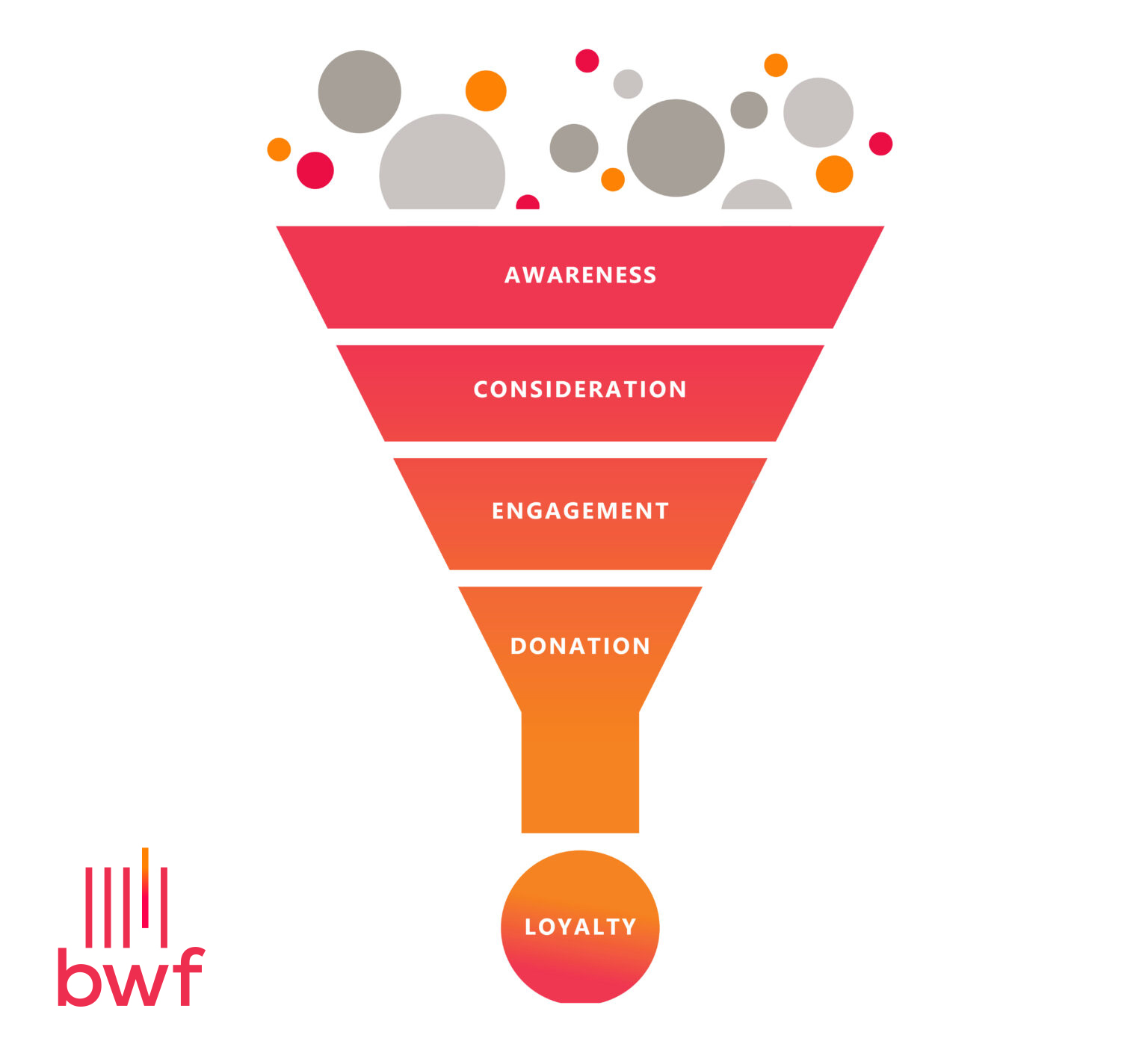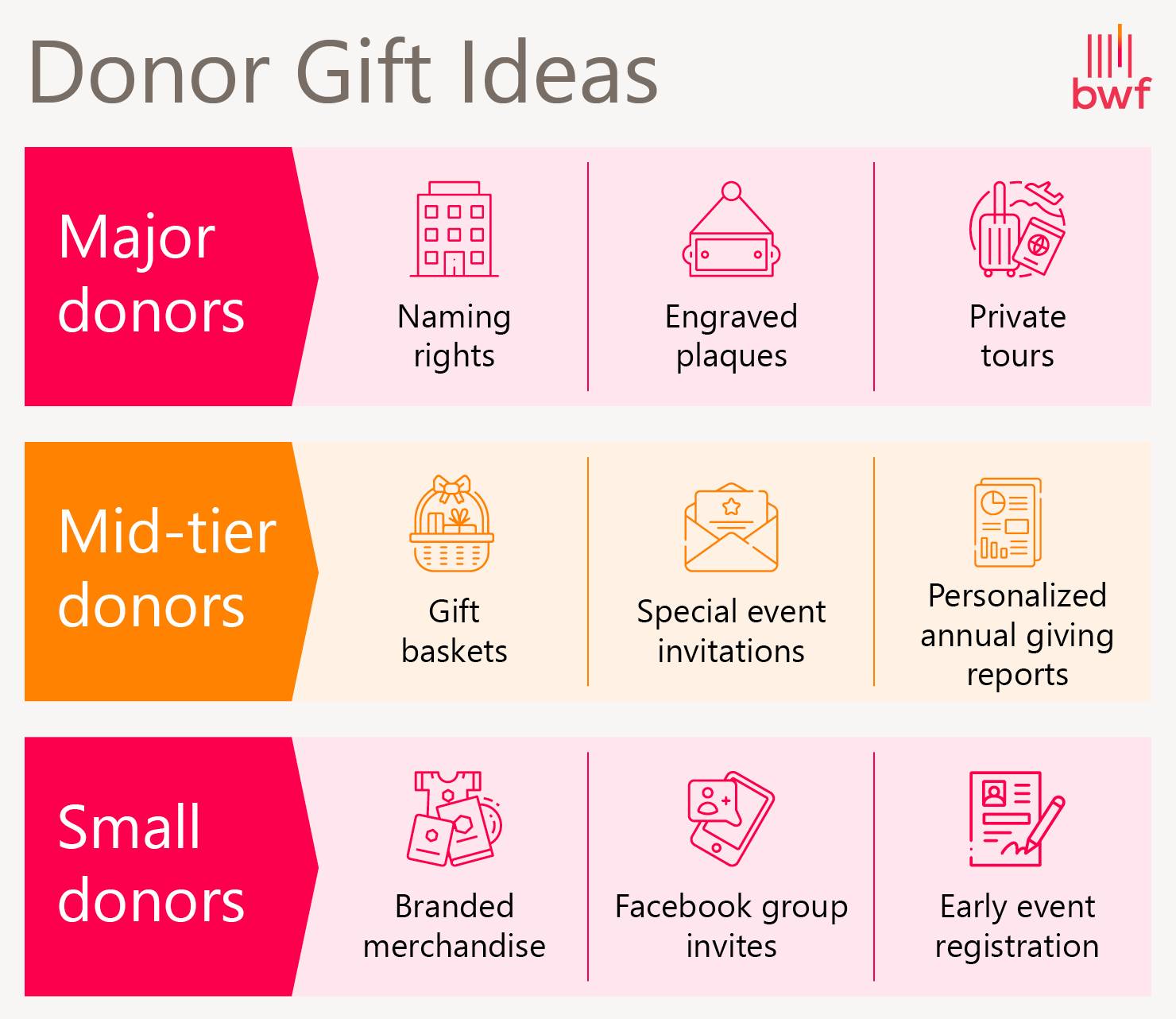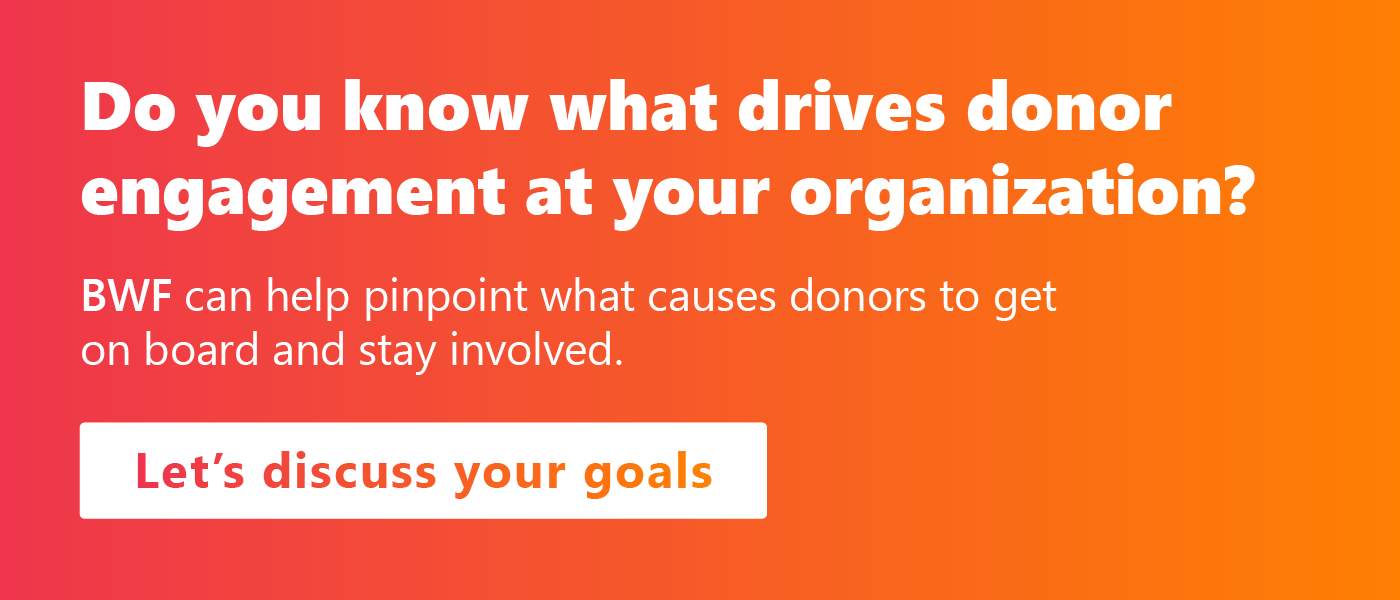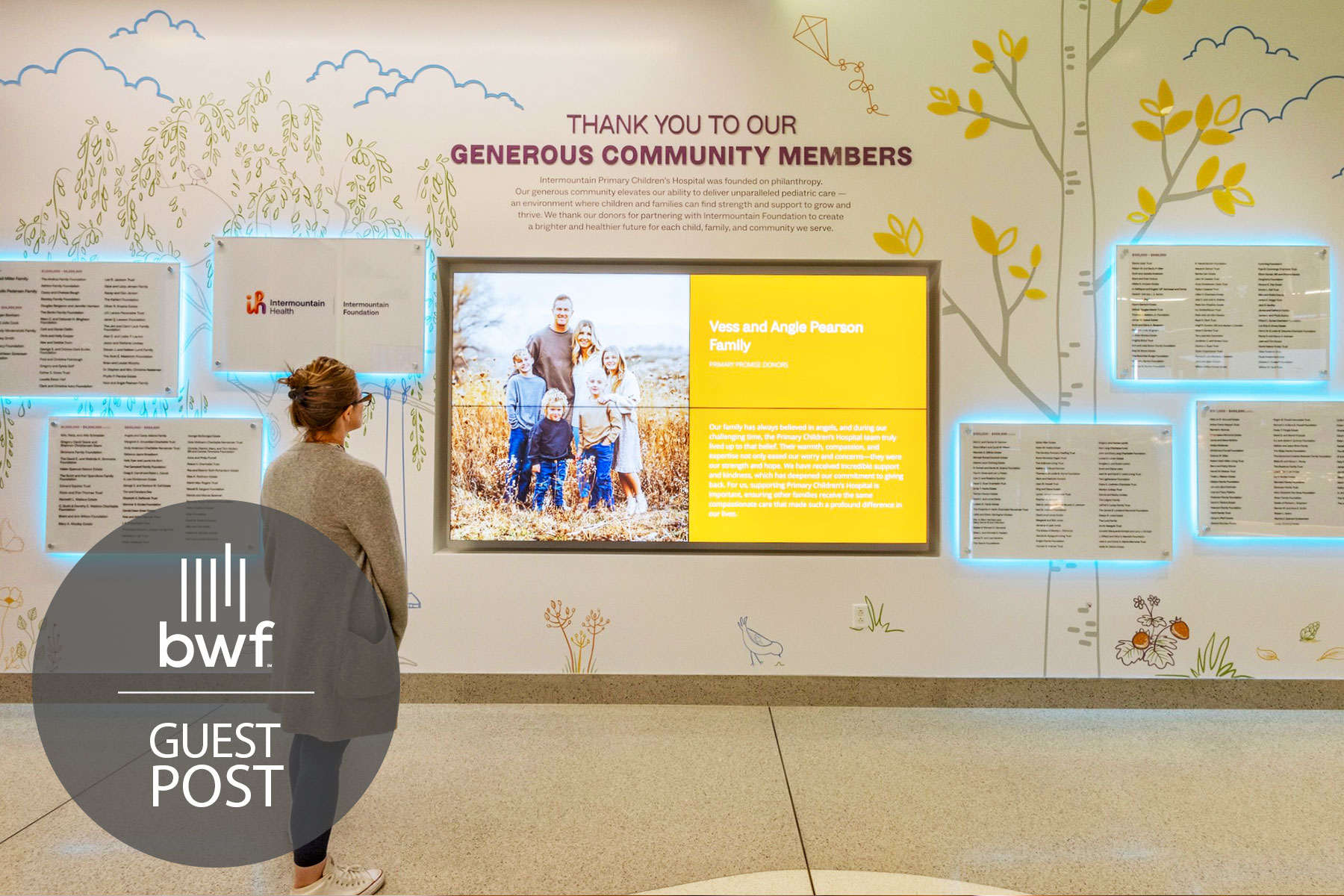Donor retention is a constant challenge for nonprofits. The average donor retention rate hovers around 45% for the nonprofit sector, and it dropped to 42.6% in 2022, the lowest rate on record.
However, with a strategic donor experience approach, you can improve your organization’s retention rate to meet or exceed this standard. By improving the donor experience, you can make the supporter journey an engaging, fulfilling opportunity for those who are passionate about your mission.
In this guide, we’ll explore the basics of improving your donor experience and donor journey to encourage long-term engagement. Here’s what we’ll cover:
Let’s begin by answering some essential questions to help lay the foundation for improving the donor journey.

Donor Experience: FAQs
What is the donor experience?
Donor experience is how donors feel about your organization based on their interactions with you. This encompasses conversations they’ve had with your staff, their donation history, their history of involvement with your mission, and their level of passion for your cause.
Donor experience may seem like a subjective measurement, but you can use a variety of quantifiable data points to assess how donors feel about your organization. These metrics include:
- Donor retention rate: The percentage of donors who gave again this year after also giving the previous year
- Donor lifetime value: The expected total donation amount a supporter will contribute throughout their involvement with your organization
- Donor churn or lapse rate: The percentage of donors who gave in the previous year and did not give again in the current year
- Donor upgrade rate: The percentage of donors who increased their giving over time
- Donor satisfaction rate: The percentage of donors who rate your organization’s giving experience a high rating within a satisfaction survey
These metrics help paint a fuller picture of what donors think about your nonprofit. You can set up recurring reports in your constituent relationship management system (CRM) to track these donor engagement data points over time to note how changes in your strategy impact your metrics.
What is the donor journey?
You may have also heard the donor experience referred to as the donor journey. The donor journey is a way to visualize the donor experience. It maps a supporter’s involvement with your organization through different phases.
The stages of the donor journey typically include:

- Awareness: New supporters first become aware of your mission or fundraising opportunities. This may involve them finding your website, seeing a social media post, receiving an email, hearing word-of-mouth referrals, attending events, or reading flyers.
- Consideration and engagement: Potential donors learn more about your cause by investigating your website, social media, email newsletters, and other marketing materials. In this step, your nonprofit will intentionally reach out to new audience members with targeted messages introducing them to your nonprofit’s community. Prospects explore your mission statement, vision, values, programs, and projects. Then, they determine whether their values and interests align with your nonprofit’s.
- Donation: Prospective donors decide whether or not to donate to your cause. Factors that inform this decision include:
- How easy your donation process is
- How much prospective donors trust your organization to keep their personal information safe
- How many giving options you accept
- How strong their connection is to your organization
- Whether potential donors feel like their donation will make a difference
- Loyalty: Your organization carries out a variety of donor stewardship activities to encourage new donors to stay involved. For example, you may send thank-you emails, invite donors to volunteer opportunities or awareness events, request feedback via donor surveys, and recognize donors publicly to show appreciation. Donors will decide whether to give again based on the quality of their relationship with your nonprofit.
You can streamline the donor journey mapping process with the help of nonprofit AI tools. These solutions can automatically update donor profiles in your CRM, allowing you to seamlessly personalize new messages. AI solutions can also help group and segment donors based on characteristics they share, such as their preferred communication platform, donation amount, donation frequency, and other traits.
What are the benefits of improving the donor experience?
Enhancing the donor experience is worth the time and effort because it can lead to a higher return on investment (ROI) for your fundraising initiatives. By improving the donor experience, you can:
- Increase donor retention. It saves time and is much more cost-effective to retain a current donor than to acquire new donors.
- Boost donors’ lifetime value. Donors who stick around tend to give more over time, leading to a higher lifetime value.
- Improve word-of-mouth marketing. Donors who have a great experience with your organization are more likely to promote you to their friends and family, expanding your potential donor pool.
- Enhance your organization’s brand and reputation. Providing a positive donor experience can boost your reputation and attract all kinds of additional supporters to your cause, including volunteers, advocates, board members, and staff.
Donors want to be involved with organizations that truly care about them. When you prioritize and optimize the donor experience, you show supporters that your organization recognizes the essential role they play in your mission.
Donor Experience Trends
What are the elements that impact donor experience? Let’s explore a few donor experience trends and factors, highlighted in BWF’s donor experience whitepaper:
Factors that affect donor retention
Some factors impact donors’ opinions more than others. According to research from BWF, these are the most important factors that impact donor experience:
- Using donors’ gifts as you said you would. The OneCause Giving Experience study found that trust is the top motivator for giving. Donors want to know that they can trust your nonprofit to use their donations exactly as you described. For example, if you let donors know that their gifts will go toward your capital campaign, don’t use them for your annual fund instead.
- Allocating donations directly to your mission. Your nonprofit should funnel the vast majority of donations into the projects and programs that directly help you achieve your mission. It helps to be explicit about how you use donations. For example, the Doctors Without Borders website has a fixed footer that breaks down exactly how the organization allocates funding.

- Making it as easy as possible to donate. Donors value having the ability to donate immediately, using whatever payment method they have on hand. They’ll have a much better experience when they can give via any device using a multitude of payment methods and complete their transactions in seconds.
Donors want to feel in control of their giving and they want to know they’re making a smart investment in your organization. Prioritizing these factors is crucial to building a positive donation experience.
Common reasons donors stop giving
Researcher Adrian Sargeant unveiled valuable donor experience insights in his paper “Donor Retention: What Do We Know and What Can We Do About It?” These insights include key reasons that drive donors to stop and continue donating to a nonprofit.
For example, donors may stop donating when they:
- Feel that other organizations are more deserving
- Don’t receive recognition from the organization
- Don’t remember donating
- Don’t receive an explanation from the organization about how funds were used
- Feel like the organization no longer needs support
We’ll explore effective ways to address these common reasons for donor lapse in a later section.
Common reasons donors continue giving
On the other hand, there are also a variety of reasons why a donor might feel motivated to stay involved in a nonprofit’s cause. Author Roger Craver revealed these motivations in his book “Retention Fundraising: The New Art and Science of Keeping Your Donors for Life.”
Craver discovered that donors may continue engaging with an organization when they:
- View the organization as effective at achieving its mission
- Know what to expect from interacting with the organization
- Receive a prompt thank-you message
- Have opportunities to share their feedback
- Feel like a part of a worthy cause
- Feel like their engagement was appreciated
- Receive information about who their donations helped
Essentially, donors want to feel involved with your mission and like your organization recognizes their contributions.
6 Best Practices for Improving the Donor Experience
Enhancing the donor experience starts with understanding your donors’ preferences and appealing to their interests to form deeper connections. Use the following tips to improve your donors’ impression of your nonprofit.
1. Make giving convenient
As mentioned above, donors want access to multiple ways to give. By providing a variety of donation methods, you can let donors use the platform or type of giving that appeals to them.
Provide giving options like:
- Online gifts
- Mail-in donations
- In-person gifts
- Donor-advised funds
- Crypto donations
- Asset transfers
- In-kind donations
Be sure to offer options that appeal to different generations. For example, according to Nonprofit Tech for Good, Baby Boomers are drawn to direct mail communications, Gen X is often inspired to give because of email, and Millennials and Gen Z tend to interact and donate online. If your audience is made of individuals from all of these generations, be sure to offer multiple engagement avenues.
2. Provide VIP access
Donors will also feel more connected to your organization when they can access exclusive opportunities to engage more deeply with your cause. Provide donors with VIP opportunities, such as:
- Opportunities to hear directly from your organization’s leaders. Invite donors to an exclusive virtual or in-person meeting where they can speak with your nonprofit’s leadership and ask questions.
- Interactions with those who are being helped by donations. For example, invite beneficiaries to speak at your annual gala so donors can hear from those who have been supported by their gifts. You can also invite donors to volunteer opportunities so they can engage with your mission in a hands-on way.
- The chance to provide feedback directly to your staff. Show donors that you value their insight by asking for their feedback via donor satisfaction surveys. Compile their responses and address common concerns to demonstrate your commitment to developing a better donor experience.
Show donors that by becoming long-term supporters of your cause, they’ll receive access to a privileged position that lets them have a greater say in the direction of your organization.
3. Personalize your donor outreach
Studies show that 71% of consumers expect a personalized experience from the brands they interact with. Personalizing your donor outreach demonstrates that you recognize and value supporters as individuals.
Develop individualized outreach strategies by:
- Addressing donor messages using donors’ names, rather than a generic greeting. For example, start your message with “Dear Alyssa” rather than “Dear Generous Donor.”
- Referencing donors’ specific donation amounts. Instead of saying “Thanks for your recent gift,” say “Thank you for your $100 donation on December 12th!”
- Offering personalized engagement opportunities based on donors’ interests. For example, if you know a certain donor likes to give to your afterschool program, invite them to volunteer with the program to see the impact of their gifts.
Store donor information, such as supporters’ names, donation histories, and specific interests in your organization’s CRM. This provides easy access to accurate data every time you draft a personalized stewardship message.
4. Offer rewards strategically
Offer donors gifts or rewards that are congruent with their giving level.
For example, you might offer major donors rewards like:
- Naming rights, such as the ability to name a room in your new building
- Public recognition in the form of a donor wall or appreciation gala
- Opportunities to privately meet with your executive director or university president
- Engraved plaques
- Private tours of your nonprofit’s facilities
Mid-tier donors could gain access to gifts such as:
- Larger appreciation gifts, such as a gift basket or branded T-shirt
- Special event invitations, including networking opportunities
- A personalized annual giving summary report
For smaller donors, you can offer tokens of appreciation like:
- Small appreciation gifts, such as a water bottle, magnet, or candle
- Invites to your exclusive Facebook group for donors
- Early event registration

Offering different types of appreciation gifts allows your staff to direct larger gratitude efforts toward your most important donors without neglecting donor appreciation at other levels.
5. Create a sense of community
One of the most effective ways to drive long-term donor loyalty is to give donors something to be a part of. Fostering community among donors and your nonprofit’s staff makes supporters feel like true partners in your success. Plus, introducing donors to other like-minded individuals can be a huge benefit for those looking to get more involved in the local community.
Engage donors in special events like:
- Social events
- Networking opportunities
- Mentorship programs
- Volunteer events
Cultivate a community mindset by promoting your engagement opportunities on social media, your website’s blog, and email newsletters. Share photos and recaps of fun donor events and encourage supporters to sign up for the next opportunity so they don’t miss out.
6. Work with an engagement consultant as needed
A donor engagement consultant will not only offer expert advice drawing on years of experience, but also help build a concrete action plan for your organization to follow.
Search for an established consulting firm that has worked with organizations or institutions similar to yours. Also, ensure your consultant offers a wide variety of services to address all of your engagement needs.
For example, BWF is a trusted consultant for nonprofits in higher education, healthcare, and across all other sectors looking to build strong donor pipelines to sustain their operations. BWF’s donor engagement services include:
- Helping to build a dynamic donor experience strategy
- Surveying constituents to gather donor sentiment insights and determine what drives engagement at your organization
- Mapping the donor journey to better understand how to increase engagement and boost ROI
To see these services in action, check out the inspiring results of a partnership between BWF and the University of Wisconsin-Parkside. BWF worked with the university as a campaign consultant to help drive donor engagement with a tangible blueprint.
Wrapping Up
Ultimately, these tips will help you foster trust and loyalty among donors, increasing the chances they’ll stay involved with your organization in the long term. By making the donor experience an integral part of your fundraising strategy, you can drive reliable support for years to come.
Looking for more tips to improve donor engagement and set your organization up for greater future success? Start with these additional resources:
- University Fundraising: 9 Tips for Better Donor Engagement. Looking to improve your university’s donor engagement approach? This guide includes top tips to improve the higher education donor experience.
- AI for Nonprofits: How to Leverage Machine Learning for Good. AI tools can help personalize your donor outreach and develop customized donor journeys. Learn more about how AI tools can work for nonprofits.
- Fundraising Predictive Analytics: Expert Tips for Nonprofits. Predictive analytics help determine your most engaged donors and develop stewardship strategies to foster donor retention. This resource offers everything you need to know.
Let’s Talk
Find out how BWF can partner with you to launch your donor experience strategy.







